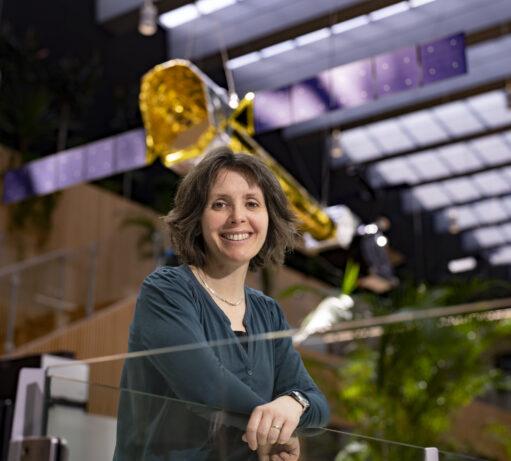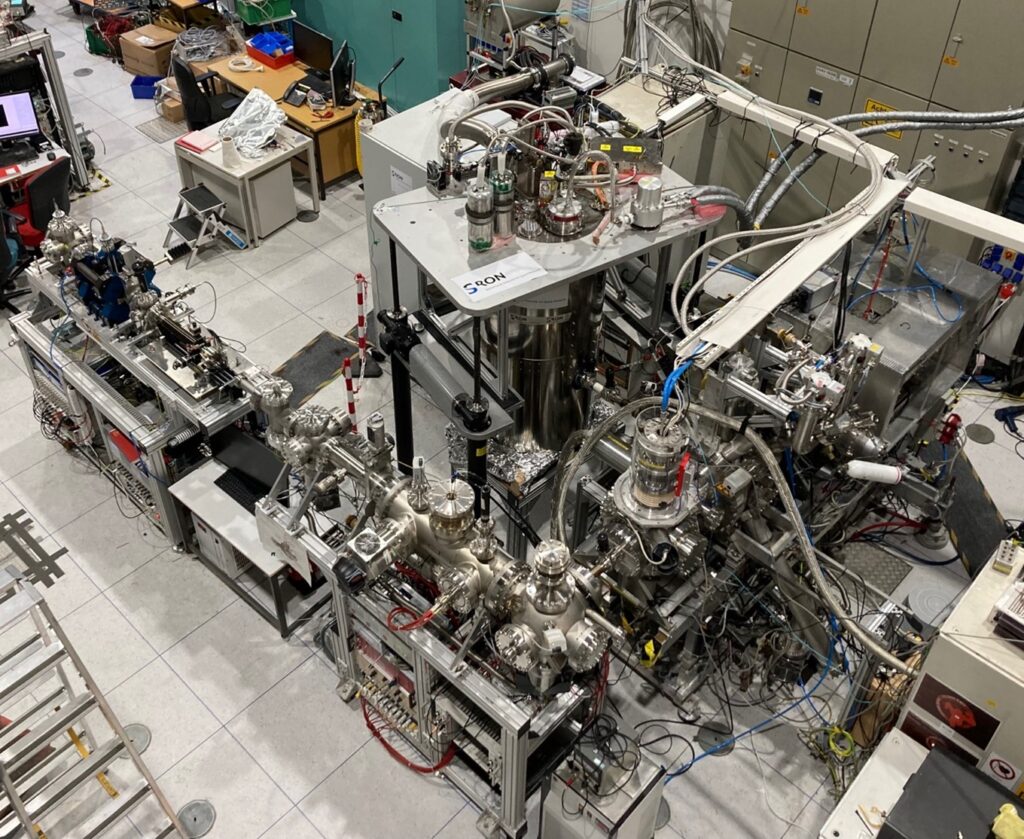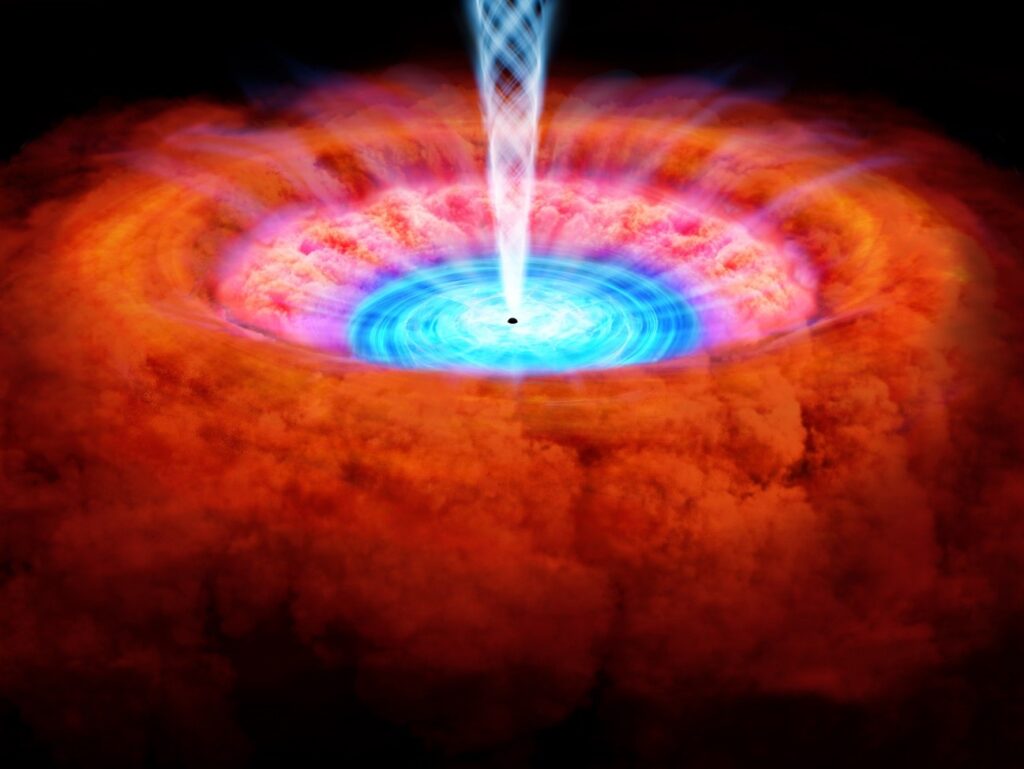| Status | Active |
| Launch | 2023 |
| Space organisation | JAXA |
| Type | X-ray (0,1 – 4,1 nm) |
| Orbit | Geocentric (550 km) |
| SRON contribution to | Resolve |
High temperatures and velocities
XRISM studies phenomena in the universe that are associated with high temperatures and velocities, and therefore emit mainly X-rays. Supermassive black holes at the centres of galaxies, for example, accelerate the gas orbiting them to almost the speed of light, making it visible to telescopes such as XRISM. The gas within clusters of galaxies also emits X-rays as it is tens of millions of degrees hot. Thanks to the high resolution of its spectrometer-Resolve, XRISM distinguishes the fingerprints of elements in the spectra of such objects, such as hydrogen, helium and iron.
Elements in the gas between galaxies
The extent to which different elements are present in the gas between galaxies is interesting because it tells the chemical story of the universe. Before the first stars were born, only the four lightest elements existed: hydrogen, helium, lithium and beryllium. Stars then transformed these into heavier atoms such as carbon, oxygen and iron. When stars explode as supernovas, they produce all elements heavier than iron. A new generation of stars is born from the dust remnants of the generation before, and thus already contain heavier elements than their predecessors to begin with. XRISM’s Resolve spectrometer measures the presence of elements, mapping the chemical life cycle of stars, and thus of the universe.

Clusters and black holes
Astronomers also use XRISM to study clusters and black holes themselves. For instance, they calculate the speeds of gas within clusters and determine how fast clusters grow. The latter is negligible on a human time scale. That is why XRISM measures the mass of clusters at multiple distances from Earth, looking at snapshots of different epochs in the universe. Around supermassive black holes, XRISM looks at the balance between what matter goes in and out. Dust and gas fall in from the disc surrounding a black hole. From the poles, ‘jets’ radiate material back out again. With this, astronomers hope to better understand how a supermassive black hole affects the formation of stars in its galaxy.
Long telescope tube
X-ray telescopes are recognisable by their long telescope tube. XRISM, for example, has a 5.6-metre-long tube leading from the mirror to the detector. This is necessary because X-rays can only be subtly deflected. It flies right through any mirror unless you hold the mirror almost parallel to the X-rays. XRISM’s mirror ring is parallel to the viewing direction, subtly deflecting the radiation. Keeping the radiation flying for a long time afterwards still converts it into a significant deflection. This is why X-ray telescopes always have a long tube. Eventually, the X-rays arrive exactly at the detector at the centre of the telescope tube’s end. To capture as much radiation as possible, XRISM stacks many mirror rings inside each other, each one just slightly smaller than the previous one, until the centre is reached.
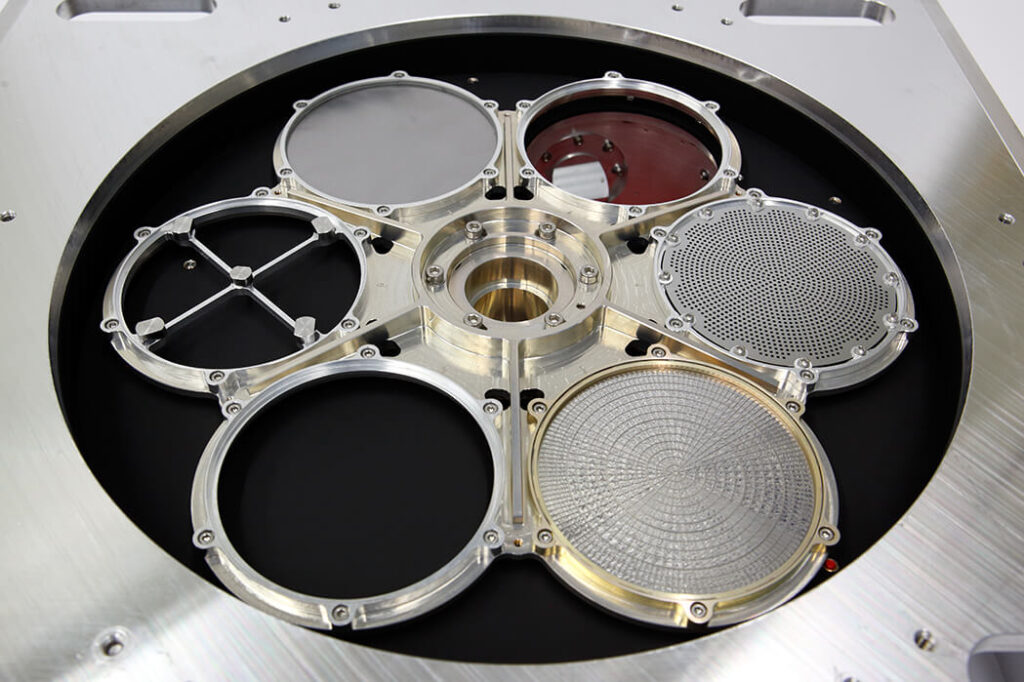
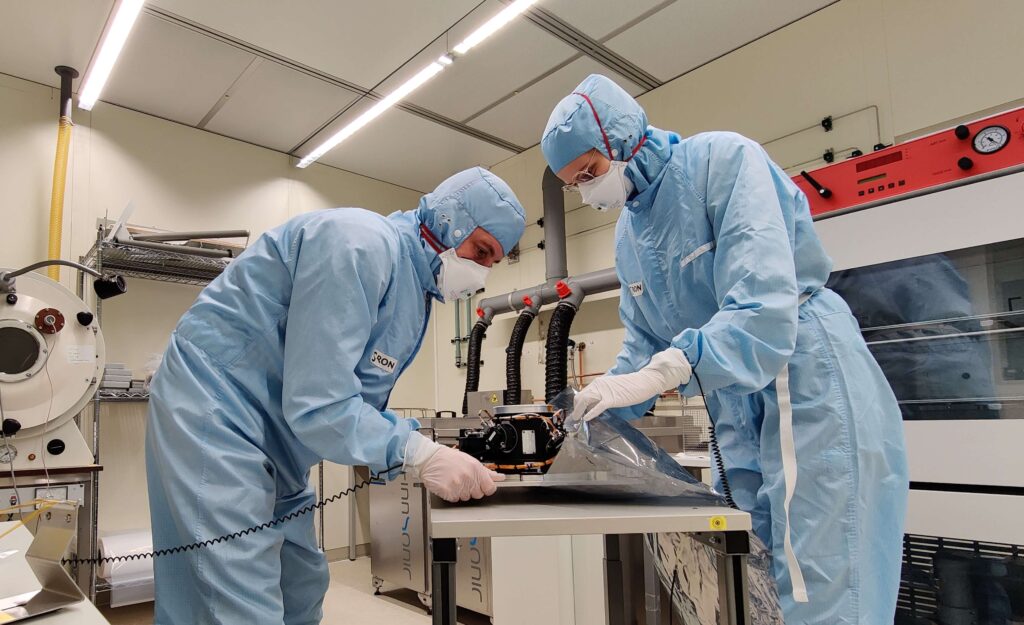
Filter wheel with calibration source
SRON has worked with the University of Geneva to develop the filter wheel for the Resolve spectrometer, including an X-ray source to calibrate the instrument. The filter wheel runs different filters for Resolve’s detectors, allowing astronomers to filter out brightnesses and wavelengths as desired. For instance, they will use the molybdenum grey filter if a star or black hole gives off too much X-ray emission and choose the beryllium or polyimide-aluminium filter to block certain wavelengths. A light-radioactive iron-55 filter is in the filter wheel to calibrate the spectrometer. Iron-55 continuously emits a known X-ray spectrum that serves as a reference point.





